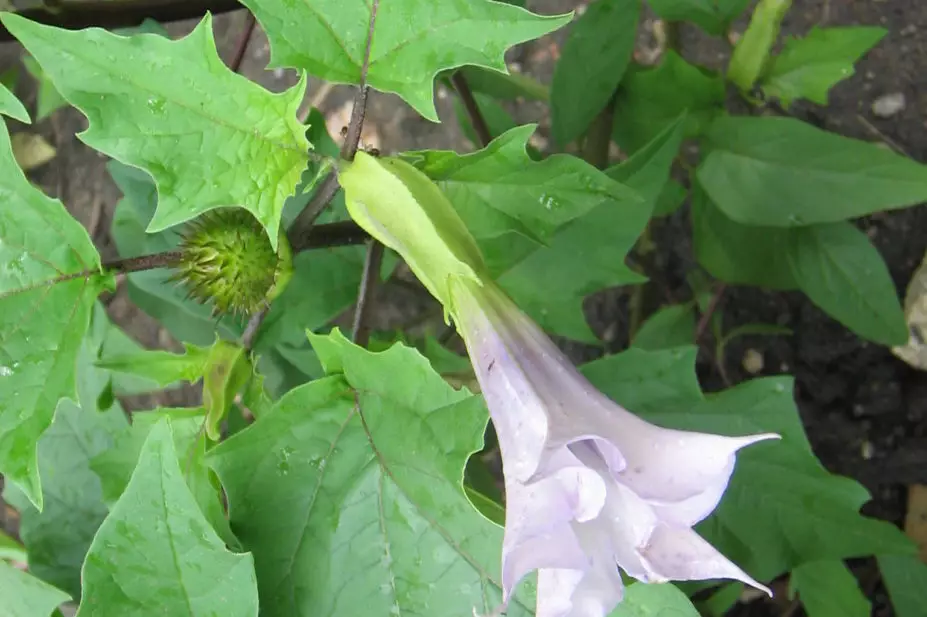
Wikimedia commons
A flower painting by US artist Georgia O’Keeffe (1887–1986) was recently sold at auction for $44.4m (£28m) — a world record for a work of art by a woman. Entitled “Jimson Weed/White Flower No 1”, the 1932 painting depicts a single white flower of Datura stramonium.
This solanaceous plant — found throughout the world’s temperate regions — has had its uses in orthodox medicine, particularly in the treatment of asthma, but nowadays it is much more likely to be encountered as a recreational drug. Sadly, its ingestion has led to a number of deaths among young Americans experimenting with it as a “legal high”.
Although most commonly called jimson weed in the US, stramonium is usually known in the UK as thorn apple, after its large and prickly seed pods. But it has many other names, including locoweed, mad apple, hell’s bells, devil’s trumpet, mad hatter, devil’s snare, crazy tea and zombie cucumber — names that give an indication of its psychedelic effects. Ingesting any part of the plant can lead to hallucinations caused by its tropane alkaloids, which include atropine, hyoscine (scopolamine) and hyoscyamine.
The word jimson in the US name is a contraction of Jamestown, the first permanent English settlement in the Americas. Although the plant was already known as James-town-weed at the time, the origin of the name is often attributed to an incident in the Jamestown area in 1676, when soldiers were sent to stop an armed rebellion against the rule of the colony’s governor. Needing to eat, the soldiers made a salad from local plants. The hallucinogenic properties of D stramonium soon took effect.
In ‘The history and present state of Virginia’ (1705), Robert Beverly wrote: “The plant was gather’d for a boil’d salad by some of the soldiers and some of them ate plentifully of it, the effect of which was a very pleasant comedy, for they turned natural fools upon it for several days: one would blow up a feather in the air; another would dart straws at it with much fury; and another, stark naked, was sitting up in a corner like a monkey, grinning and making mows [grimaces] at them; a fourth would fondly kiss and paw his companions, and sneer in their faces with a countenance more antic than any in a Dutch droll.
“In this frantic condition they were confined, lest they should, in their folly, destroy themselves — though it was observed that all their actions were full of innocence and good nature. Indeed they were not very cleanly; for they would have wallowed in their own excrements, if they had not been prevented. A thousand such simple tricks they played, and after 11 days returned themselves again, not remembering anything that had passed.”


